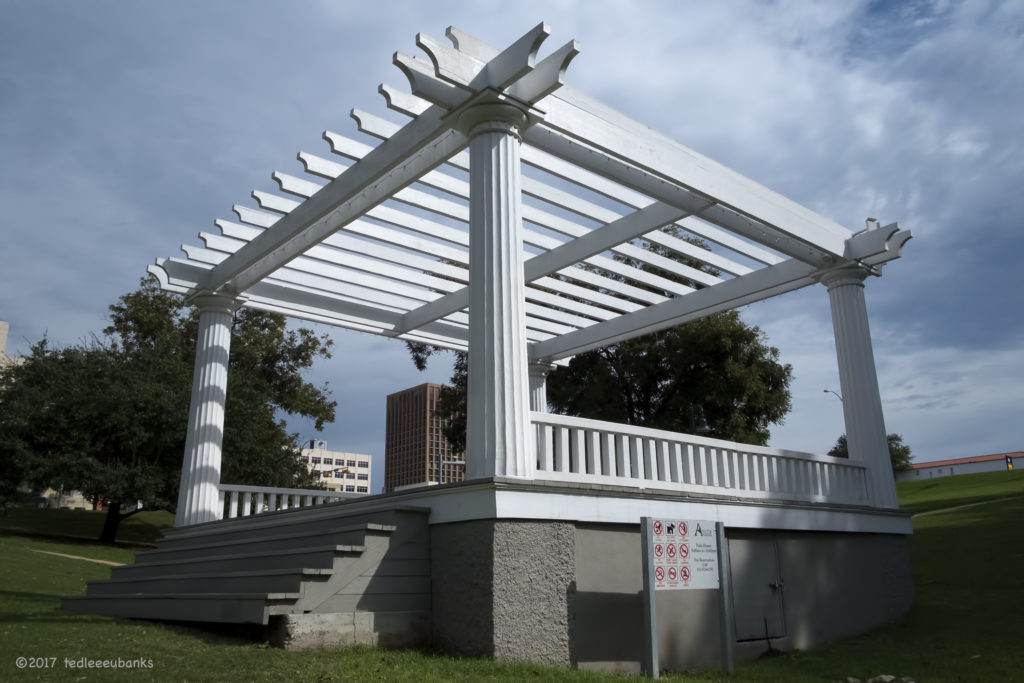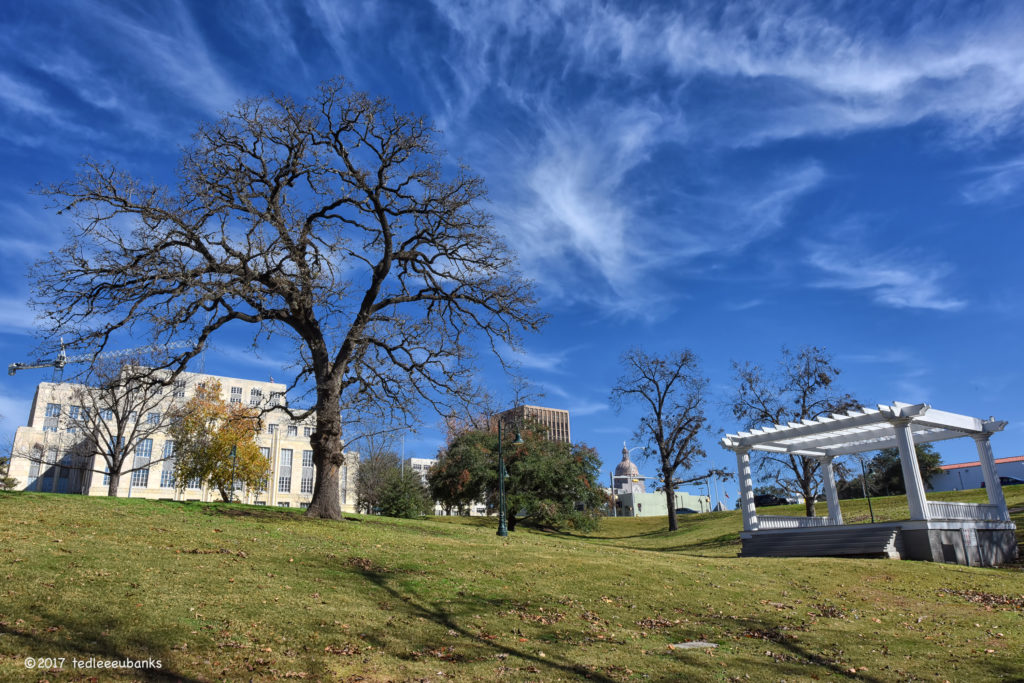
Life is punctuated by places where events conspire. These are those rare points on the landscape where our normally neat and ordered view of the world is challenged, where disparate elements are mashed into a singularity. Consider the juxtaposition of the Dexter Avenue Baptist Church and the Alabama State Capitol, for one example.
Wooldridge Square is one of the four civic spaces included in Edwin Waller’s 1839 plan for Austin, Texas. Fermata has been contracted by the Downtown Austin Alliance, working in partnership with Austin’s Park and Recreation Department, to develop an interpretive strategy for the three remaining historic squares, including Wooldridge. Part of our interpretive approach is to search for these places where events conspire.
The building to the left in the image above is the Heman Marion Sweatt Travis County Courthouse. This is the site of Sweatt v Painter, one of the early U.S. civil rights cases. In 1950, the U.S. Supreme Court ruled that the University of Texas (UT) did indeed violate Sweatt’s civil rights when it denied him entry into the UT Law School. This case helped inform the 1954 Brown v Board of Education ruling that desegregated schools. Thurgood Marshall, eventually becoming a Supreme Court justice himself, argued both cases before the Supreme Court.
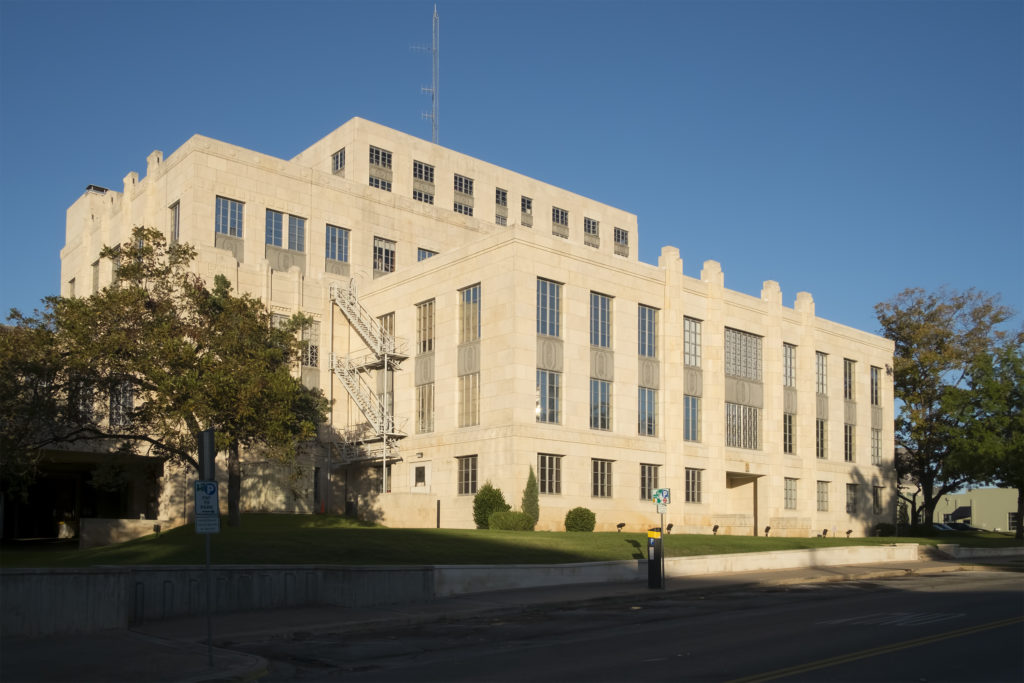
The next building of interest to the right of the courthouse is the Texas State Capitol. In 1911, the Texas legislature refused to give Booker T. Washington permission to speak inside the capitol.
At the right edge of the image is the bandstand or pergola in the center of Wooldridge Square. Mayor A. P. Wooldridge invited Booker T. Washington to speak from this bandstand after the Texas legislature refused him permission to speak in the capitol building. Washington spoke from this bandstand on September 30, 1911.
Finally, Lyndon Johnson announced his 1948 candidacy for the U.S. Senate from this bandstand. Johnson would become president and sign the landmark Civil Rights Act of 1964.
Although not visible in this photograph, the UT Tower can be seen from here as well. Martin Luther King spoke to UT students on March 9, 1962. He stayed in a room at the Texas Union since his sponsors were afraid that he would be harassed if he stayed in a downtown hotel.
The UT Tower, at least in part, is a product of FDR’s New Deal. In June 1941, Roosevelt also issued Executive Order 8802, which created the Fair Employment Practice Committee (FEPC). This order was the most important federal action in support of protecting the civil rights of African-Americans between Reconstruction and Johnson’s Civil Rights Act of 1964.
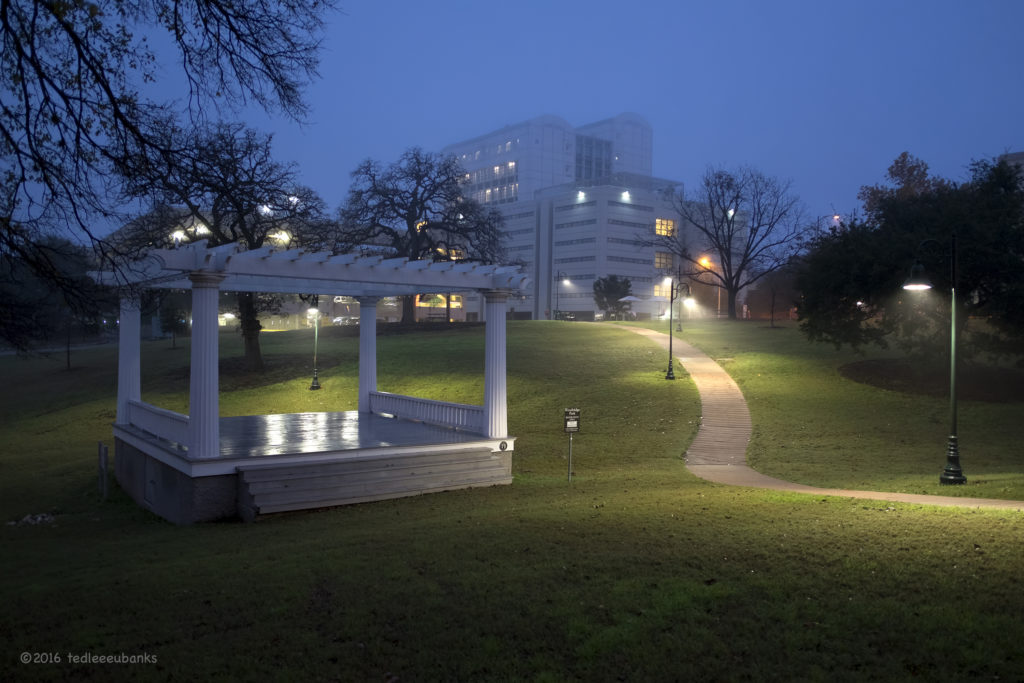
Directly behind where I took this photograph is the Austin History Center (AHC). The AHC is housed in the 1933 Austin library building. Three churches, including one of the original African-American churches in Austin, stood on the lot. These churches were relocated in 1918, with the land eventually redesignated for a segregated public library. Austin City Council abolished racial segregation in the Main Library and the Carver Branch Library in December 1951.
Here is another angle to consider, one that admittedly demands minor mental gymnastics. Another Austin New Deal project is House Park, the football stadium still used by Austin High. House Park is only a few blocks from Wooldridge Square, and its lights are easily seen from this vantage point. The stadium was built on land donated by Edward M. House, a former diplomat, close adviser to Woodrow Wilson, and Austin resident. A deed restriction on the House Park athletic field prohibited African Americans from participating in sports activities there.
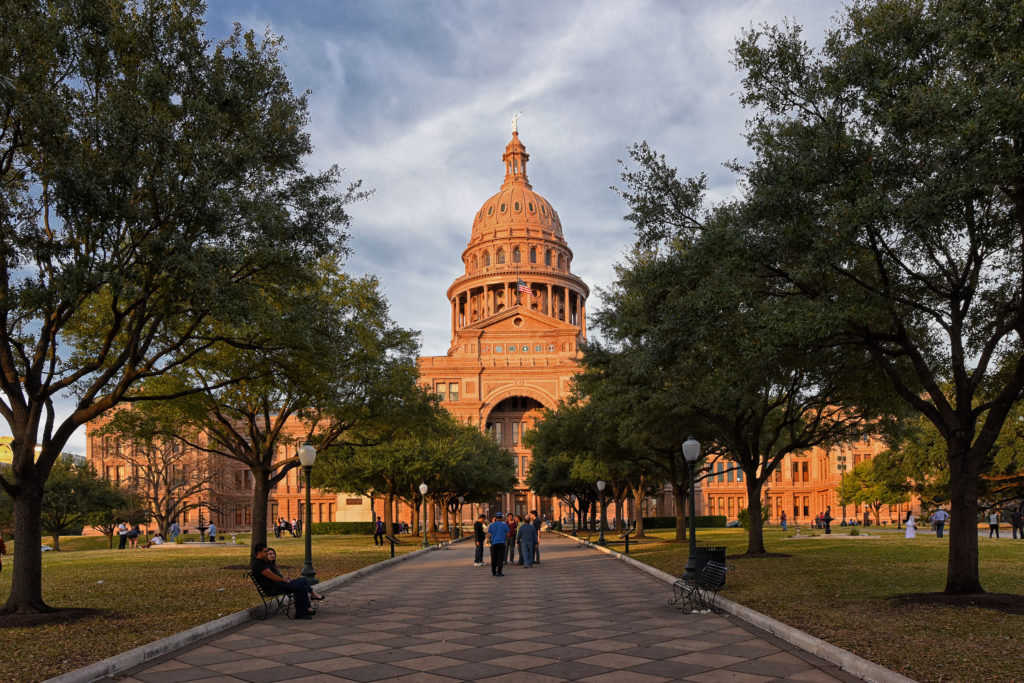
Stay with me. House introduced Roosevelt to Jesse Jones, the Houston developer, newspaper owner, and financier. Roosevelt later appointed Jones chairman of the Reconstruction Finance Corporation, the New Deal’s financial arm. Jones wrote the checks that financed the UT Tower, House Park, and dozens of additional projects (including a number of UT dormitories) in Austin during the Great Depression. The ghosts of Booker T. Washington, FDR, Edward House, Jesse Jones, and LBJ can be sensed at Wooldridge.
This is the interpretive thread that wends through these events and ties them together at Wooldridge Square (loosely, I admit). This tucked-away corner of the square isn’t just a place where we can enjoy an unobstructed glimpse of the state capitol. Here, we also stand witness to our shared past, especially to the African-American experience. Wooldridge Square is common ground, a civic space that is the physical embodiment of our community’s heritage.
Any consideration (such as park planning) of civic spaces such as Wooldridge should start, not end, with a narrative that identifies storylines, stories, and specific places where these stories conjoin. Not every park requires such detail (think soccer fields in suburbia). But, place values are not limited to the functional uses of a landscape (such as recreation). People relate to parks and civic spaces affectively and cognitively, too.
When altering a sensitive landscape, we run the risk of obliterating some of these values. For example, Austin has a Great Streets program that, among other requirements, mandates tree plantings. But, what if you planted trees that obliterated this view? Sensitive landscapes such as Wooldridge demand an understanding of not just the land itself but of its interpretive meaning, as well. Planning in these special places should be led, not followed, by the interpretive assessment and narrative.
